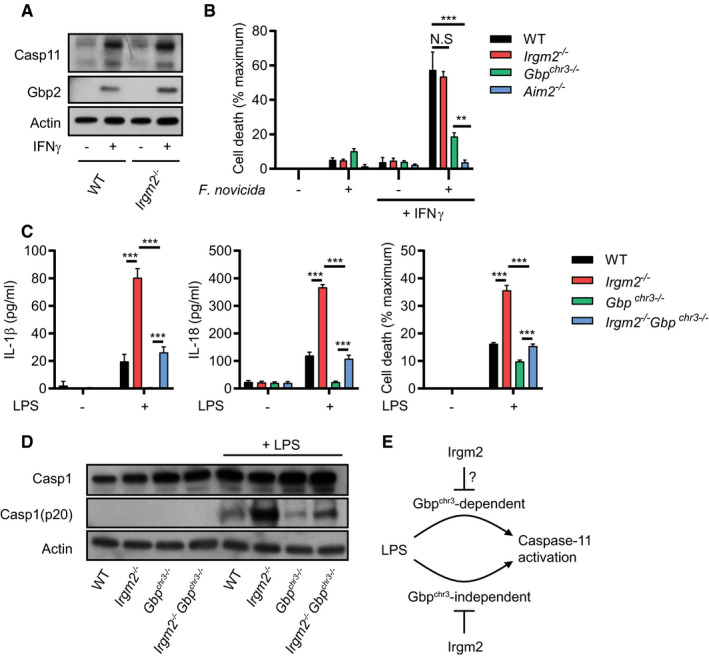WT and Irgm2
−/− BMMs were stimulated overnight with IFNγ or left untreated and cell lysates were collected. Lysates were assessed for Casp11, Gbp2, and actin protein levels via immunoblotting.
IFNγ‐primed and unprimed WT, Irgm2
−/−, Gbp
chr3−/− and Aim2
−/− BMMs were infected with Francisella novicida (MOI 10) and LDH release measured at 4 hpi.
WT, Irgm2
−/−, Gbp
chr3−/− and Irgm2
−/−
Gbp
chr3−/− BMMs were treated with LPS (1 μg/ml). IL‐1β, IL‐18, and LDH release were assessed at 24 hpt.
IFNγ‐primed WT, Irgm2
−/−, Gbp
chr3−/− and Irgm2
−/−
Gbp
chr3−/− BMMs were treated with LPS (1 μg/ml) for 24 h and cell lysates and supernatants collected. Protein levels in cell lysates (Caspase‐1 and actin) and supernatants (Caspase‐1 p20) were visualized via immunoblotting.
Model depicting regulation of caspase‐11 activation by Irgm2 and Gbps.
Data information: Graphs show means ± SEM from
n = 3 (B, C) independent experiments. **
P < 0.01, ***
P < 0.001 for indicated comparisons by two‐way ANOVA with Tukey's multiple comparisons test. (A) and (D) represent one of two independent experiments. N.S, non significant.
Source data are available online for this figure.

